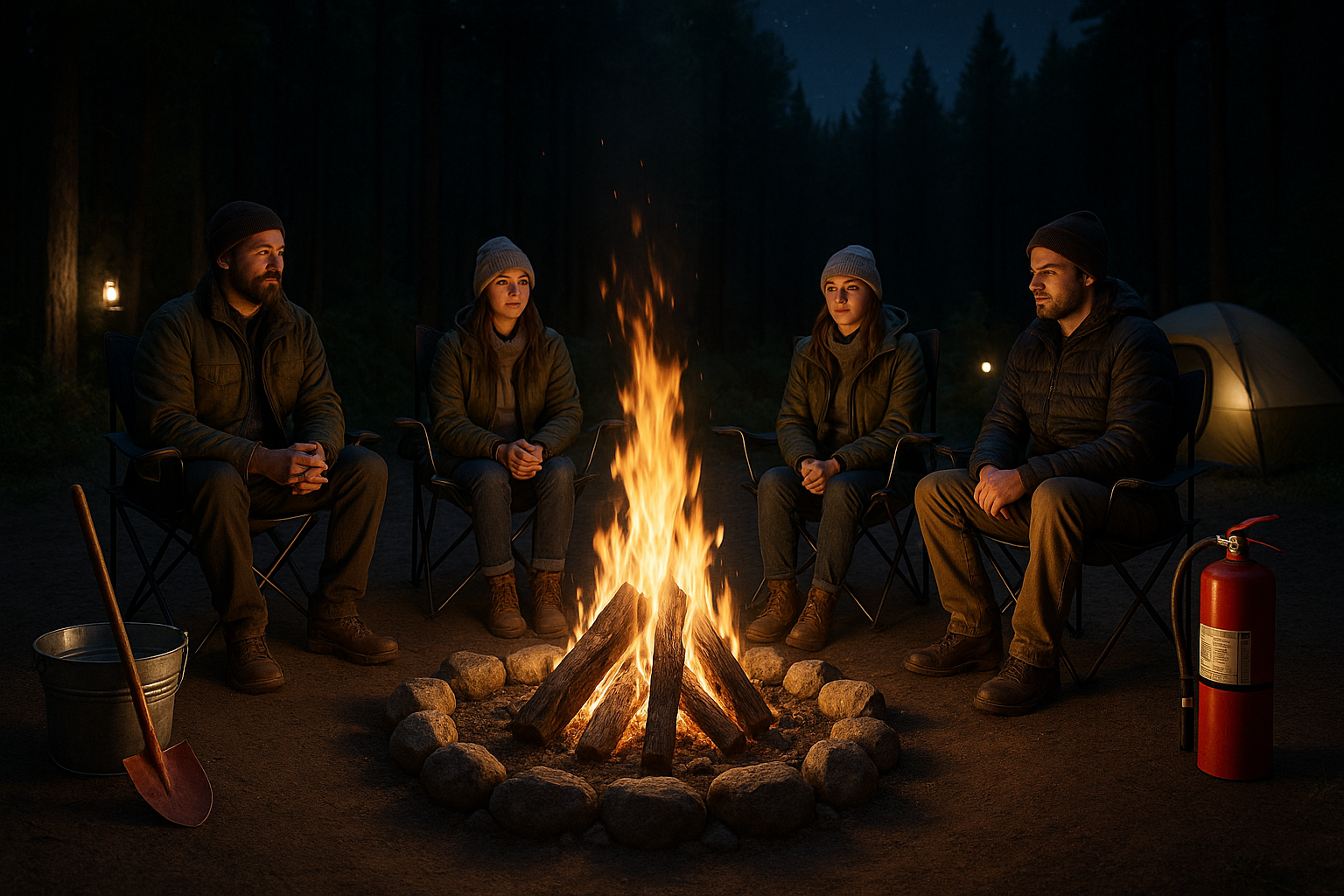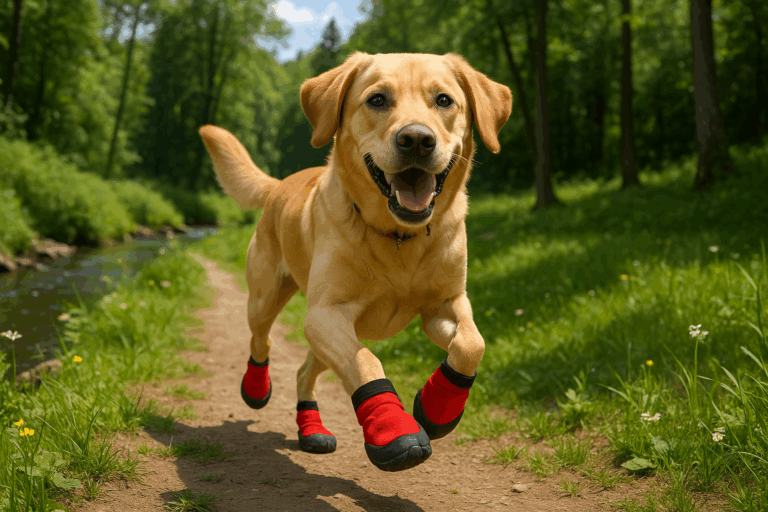These are moments we live for, the reason we venture into the great outdoors. But amidst the tranquility and the allure of a blazing campfire, lurks potential danger. This article aims to shed light on the intricacies of campfire safety, transforming your outdoor adventure from a potential hazard into a safe, memorable experience. 🔥
In this detailed guide, we’ll navigate the spectrum of campfire safety, starting from the initial steps of selecting a suitable site, to the final act of extinguishing the fire. Whether you’re a seasoned outdoor enthusiast or a novice adventurer, we’ll provide you with valuable insights into fire management, safety protocols, and preventative measures, ensuring your campfire doesn’t turn into a wildfire. 🌲
For many, building a campfire is an integral part of the outdoor experience. It provides warmth, light, and a means to cook meals. But, as with many things in life, there’s a fine line between a controlled fire and an uncontrollable blaze. Safety is paramount, and having the right knowledge is just as important as having the right equipment. Through this article, we’ll explore the essential practices, tools, and techniques needed to maintain a safe and enjoyable campfire experience. 🏕️
Fire can be a fickle friend. One minute it’s providing warmth and comfort, the next, it’s causing chaos and destruction. Understanding the behavior of fire, its potential dangers, and the best ways to control it, is the first step towards maintaining a safe outdoor environment. As we delve into the science of fire, we’ll unravel its mysteries and reveal how you can harness its power safely and responsibly. 🔍
Just as important as understanding fire itself, is knowing how to interact with the environment around it. The great outdoors is a complex ecosystem, and even a small fire can have far-reaching impacts. From choosing the right site for your campfire, to understanding how weather conditions can influence fire behavior, we’ll delve into the environmental factors that play a crucial role in campfire safety. 🌎
Lastly, we’ll delve into the practical aspect of campfire safety – the ‘do’s and don’ts’ of building and maintaining a fire, the importance of fire extinguishing methods, and the value of emergency preparedness. By the end of this guide, you’ll be well equipped to handle any campfire situation that comes your way, ensuring your outdoor adventures remain both safe and enjoyable. ⛑️
With an in-depth look at campfire safety, this article promises to be an enlightening read for outdoor enthusiasts. So, let’s venture into the heart of the flame, unveiling the secrets to a safe and memorable campfire experience. Are you ready to embark on this journey towards safer, more responsible outdoor adventures? Let’s dive in! 🚀
Ignite Your Knowledge: The Fundamentals of Campfire Safety
Nothing encapsulates the quintessential outdoor adventure quite like a campfire. The warmth, the crackling embers, the mesmerizing dance of the flames – it’s a scene straight out of a wilderness-themed novel. But with this idyllic image comes responsibility. Improperly managed, a campfire can quickly turn a peaceful outing into a dangerous situation.
The aim of this article is to arm you with the knowledge necessary to safely enjoy your campfire. I will delve into the essential tips and techniques for fire safety, provide a comprehensive comparison of different fire types and their respective safety measures, and offer you valuable resources to further your understanding. For a visual guide on campfire safety, I highly recommend the video “Campfire Safety: How to Put Out a Campfire” by REI (YouTube Channel).
Whether you’re a seasoned outdoor enthusiast or a novice camper, it’s critical to be well-informed about fire safety. So let’s dive in and stoke the flames of your campfire knowledge.
The Anatomy of a Safe Campfire: A Comparative Overview
The type of campfire you build will significantly impact its safety. Below, I’ve broken down the main types of campfires and included a table comparison to illustrate the differences between them.
| Type of Fire | Description | Safety Measures |
|---|---|---|
| Tepee Fire | A cone-shaped fire built with small kindling stacked around larger logs. | Ensure the fire is fully extinguished before leaving the site. Don’t build too large as it can quickly become uncontrollable. |
| Log Cabin Fire | A square-shaped fire, built by stacking logs in a crisscross pattern. | This fire burns hot and long, so it’s crucial to keep it at a manageable size and to put it out completely when done. |
| Lean-To Fire | A fire built by leaning kindling against a larger log. | Ensure the log is stable to avoid the fire toppling over. This type of fire burns quickly, so monitor it closely. |
For a more detailed look at how to build and safely manage these types of fires, check out the video “Types of Campfires & How to Build Them” by Outdoor Boys on YouTube.
The Golden Rules of Campfire Safety
Knowing the type of fire you’re dealing with is only the first step in campfire safety. Let’s now uncover the golden rules that apply universally to all campfires.
- Only build campfires in designated fire pits or rings. This minimizes the risk of the fire spreading.
- Never leave a campfire unattended. It only takes a moment for a fire to get out of control.
- Ensure you have a means to extinguish the fire close at hand. This could be a bucket of water, a shovel to smother the fire with dirt, or a fire extinguisher.
- When extinguishing a fire, do so completely. Pour water or dirt on it until the embers are no longer hot to the touch.
A Deeper Dive into Extinguishing Campfires Safely
One of the most critical aspects of campfire safety is proper extinguishing. The U.S. Forest Service states that the majority of wildfires are caused by humans, many from unextinguished campfires. Let’s delve into the safe and effective ways to extinguish a campfire.
The “Drown, Stir, and Feel” method is considered the gold standard when it comes to extinguishing campfires. The steps are as follows:
- Drown: Pour plenty of water on the fire. The goal is to soak all the embers, not just the red ones.
- Stir: Use a shovel or stick to stir the ashes and embers, breaking up any remaining chunks.
- Feel: Carefully feel the extinguished fire with the back of your hand to ensure no heat remains.
The video “How to Extinguish a Campfire Safely” by SmokeyBear.com on YouTube provides an excellent visual guide to this method. Remember, only you can prevent wildfires, so always make sure your campfire is completely out before you leave it.
Fire Safety Equipment: A Comparative Guide
As the saying goes, “an ounce of prevention is worth a pound of cure.” Having the right equipment on hand can make a world of difference when it comes to campfire safety. Below, I’ve provided a comparative guide to essential fire safety gear.
| Equipment | Description | Use |
|---|---|---|
| Fire Extinguisher | A device filled with foam or gas under pressure, which can be released to extinguish a fire. | Can be used to quickly put out small fires or to control a fire until help arrives. |
| Shovel | A tool with a broad blade and typically upturned sides, used to scoop or dig. | Can be used to smother a fire with dirt or sand, or to create a fire line. |
| Bucket of Water | A container filled with water. | Can be used to drown the fire and cool the ashes and embers. |
For more information on fire safety equipment and how to use it, the video “Fire Safety Training – How to Use a FIRE EXTINGUISHER” by The Fire Protection Technician on YouTube is an invaluable resource.
Enhancing Your Campfire Experience Safely
A campfire is not just about warmth or cooking; it’s also about the experience. Singing songs, telling stories, and making smores are all part of the campfire charm. However, even these fun activities need to be done safely.
For activities involving the fire, such as roasting marshmallows or hot dogs, use long skewers or roasting sticks. Keep a safe distance from the fire and ensure children are supervised at all times. And remember, even after the fire has been extinguished, the area can remain hot for a long time, so caution is still necessary.
Ultimately, campfire safety boils down to awareness, preparation, and responsibility. With these principles in mind, you’re set to create memorable and safe outdoor adventures. So go forth, explore, and let the glow of a campfire light up your wilderness experience.

Conclusion
As we draw this comprehensive exploration of modern software engineering practices to a close, it’s pivotal to highlight the fundamental points that have been comprehensively covered throughout this insightful journey. 👨💻
To kick things off, the article painted a vivid picture of the complex world of Software Engineering, illuminating how it has morphed into an indispensable component of our digital era. This concept is encapsulated in the widely-accepted definition of software engineering as the application of a systematic, disciplined, and quantifiable approach to the development, operation, and maintenance of software. 🌐
Further, the role of software engineers was underscored, bringing to the fore their responsibility for designing, developing, and testing software systems to meet the rapidly changing technological needs of today’s world. Additionally, the importance of adaptability, a strong foundation in mathematics, and a firm grasp of algorithms and data structures for success in this field was discussed. 🏗️
The article then dove deep into the various software development methodologies such as Waterfall, Agile, and DevOps, outlining their key characteristics, strengths, and drawbacks. The critical need for software engineers to understand and apply these methodologies in their daily work was emphasised, reinforcing the significance of these approaches in ensuring software quality and reliability. 💻
In the subsequent sections, the importance of coding standards, version control, and software testing was comprehensively examined, demonstrating how these practices contribute to the robustness and maintainability of software systems. In particular, the benefits of automated testing and continuous integration in improving software quality and reducing development time were highlighted. 🚀
Finally, the article took a deep dive into the rapidly evolving field of cloud computing and how it’s transforming the landscape of software engineering. The rise of platform-as-a-service (PaaS) and infrastructure-as-a-service (IaaS) offerings was explored, showing how these services are driving the shift towards distributed software development and operations. ☁️
As we conclude, remember that this knowledge is not merely to be consumed, but to be applied in practice. I encourage you to embrace these insights, explore these topics further, and use them to improve your software engineering skills. You can delve deeper into these concepts through various reliable online resources like [Wikipedia](https://en.wikipedia.org/wiki/Software_engineering), [Stack Overflow](https://stackoverflow.com/), or [GitHub](https://github.com/). 💡
I hope that you found this article informative and engaging. Your thoughts and experiences would certainly enrich this discourse, so feel free to leave a comment below. Additionally, if you found this article valuable, kindly share it within your networks.
Remember, the road to mastery in software engineering is a continuous journey of learning and growth. So, let’s forge ahead, one code line at a time. 👨🎓
Please remember to subscribe to our blog for more insightful articles in the world of software engineering. I look forward to your active participation in our future discussions.
Keep coding, keep learning! 💻🚀🌐🏗️



